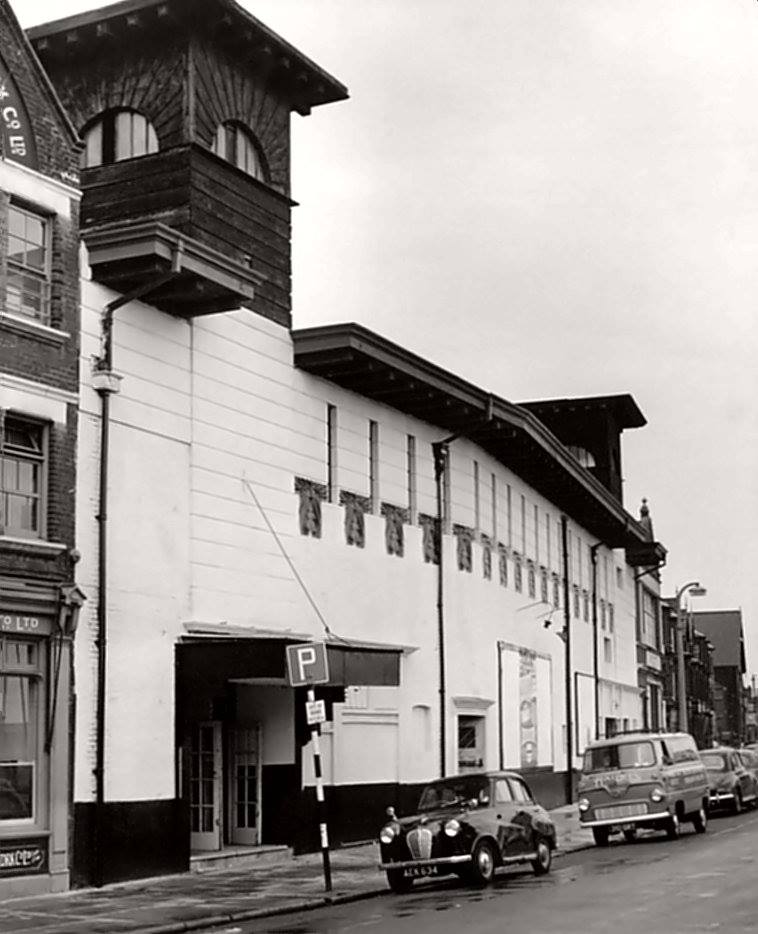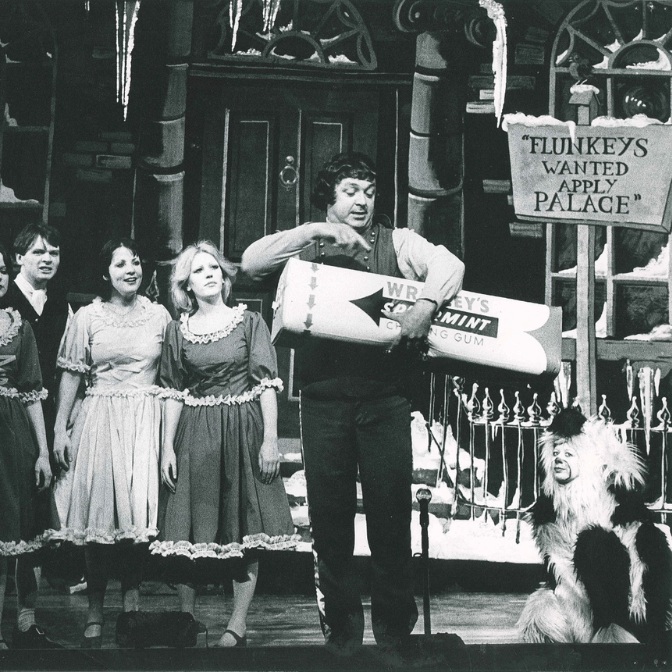Pantomime is a cornerstone of the festive period and has been so for centuries. Always interactive and endlessly silly, pantomime can be relied upon for a warming, festive experience, complete with gorgeous costumes and sets. But what is it about panto that has stood the test of time?

To find out, we had a discussion with Paul Holman, the founder of Paul Holman Associates (PHA), one of the country’s leading pantomime producers. WTM have collaborated with PHA on our pantomimes for many years and we wanted to know more about where Paul’s love for panto came from, and where he sees the artform going.
Paul Holman gets ‘the bug’
Paul began his career as a producer around the age of 13, hiring a local 200 seat hall and producing a revue show. He says, “Someone once asked me, ‘What would have happened if nobody had turned up?’ and I just said, ‘Oh, I never thought about that – I just assumed we’d be full!’” And he was right! Paul unknowingly took a risk but it paid off. Thus began his life-long profession – fuelled by the boldness of youth and a seemingly innate understanding of what people want to see.

He’d caught the ‘theatre bug’ when he was much younger, when a variety of performers from the Lowestoft Hippodrome would park their trailers and caravans in the backyard of his Grandmother’s pub. They once hosted an act involving a lion, which kept baby Paul up all night with its roaring.
Surrounded by performers, with parents who worked all hours at the pub, Paul would keep himself out of trouble by going to see the shows at his local theatres, including the pantomimes: “We had an act in our backyard… They took me down [to the theatre], and I stood in the wings for the first 20 minutes of Jack and The Beanstalk, and I think I got a bit too near the stage so they yanked me off! But I would have been about 9 and I can remember that show – and I could sing all the songs, and I can remember all of the artists in it.”
He knows he was lucky to have grown up in an environment like this, it’s given him a knowledge of the theatre world beyond his years, yet feels first hand. There’s an unerring confidence about Paul, that is naturally downplayed with humour. He’s tenacious, a bit cheeky, and clearly passionate about what he does. He’s a natural raconteur, with an impressive memory for shows he’s seen and produced. He has done it all, and has a star-studded anecdote for any occasion. But on top of his deep knowledge of performance history, and his expert levels of what makes a pantomime, Paul is resolutely committed to allowing panto to evolve as an artform.
The Evolution of Pantomime
Paul reflected on how panto has evolved and changed over the span of his career: “A lot of the old actors tell me I’m not doing traditional pantomime. But any time that happens, I bring it back to the question, ‘What do you mean by traditional?’” It’s a good point to raise – traditions of any kind tend to be shaped and remoulded over time to fit modern life and expectations. Evolution is essential in entertainment to keep audiences engaged and so, even panto traditions can change.
He presents a potted history of how pantomime has changed over the last 150 years, saying that each new transformation in pantomime was met with resistance. He begins with the Victorians introducing Music Hall performers to panto in the late 19th century, before jumping to the use of pop stars and Palladium variety acts from the 1950s and 1960s onwards. Then, the last 40 years has seen the rise of TV personalities such as Gladiators, soap stars, presenters, and reality TV contestants.
Paul points out that the type of acts seen in panto always moves with the times, and always faces an initial backlash, before becoming the standard of their time: “People say, ‘That’s not pantomime’ and it goes on and on… We’ve been there before, we’ve seen it before.”
As Paul says, pantomime evolving is nothing new. Longstanding pantomime tropes include audience participation, gender swapped characters, animal sidekicks, and of course, music. These have emerged from an amalgamation of several European performance traditions, such as the folkloric frivolity of the Middle Ages’ Mummers plays, and the slapstick comedy and clowning of commedia dell’arte.
It is an artform that has grown, almost organically, from a collection of different performance styles, which may explain why it is well adapted to continuously change to fit modern entertainment values. Changes to pantomime traditions are directly related to developments in entertainment as a whole.
Paul recognises that traditions in art have to be approached with a sense of fluidity: “It has to evolve otherwise you might as well pack up and go home.”

He has an instinct for what people will enjoy, whether or not it’s classed as traditional panto. “But what is tradition?” He posits, “I actually don’t really know! I think it’s what people saw, or what they remember, from when they were a child.”
Panto Now
This year, WTM is presenting its dreamiest panto yet – Sleeping Beauty: The Pantomime, featuring a stellar cast of singers, dancers and comedians. WTM have adapted the Sleeping Beauty story to have the princess woken from her sleep by a magic rose, instead of a kiss, to reflect modern sensibilities on presenting consensual relationships. PHA allows each of their productions to be tailored to venues in this way, ensuring a collaborative creative process in developing its pantomimes. “We do a different show, because you asked to do it differently. People might ask ‘Why have you got a gardener in Sleeping Beauty’, and I’d just say, ‘Why not?’” Paul’s focus is more on ensuring audiences have a good time:
“We’re making entertainment. My prime objective in pantomime is that it has to be funny. If people don’t have a good laugh then they haven’t enjoyed the show.”
Along with the laughs, Sleeping Beauty: The Pantomime is packed full of spectacle with incredible circus skills, dance, puppetry and, of course, a bit of theatre magic!
Paul’s successes come from his commitment to producing fun and entertaining pantomimes. His aim of keeping his pantomimes relevant is therefore a testament to his deep understanding of the ever-evolving industry he has “lived and breathed” for most of his life. WTM looks forward to many more years of working with PHA on our wonderful pantomimes.
Sleeping Beauty: the Pantomime is running until 1st January 2024.
WTM’s pantomime has been made possible by our generous sponsors Bennett Griffin, Lancing Prep Worthing, Bird and Blend, and Reflections Nursery and Forest School.



